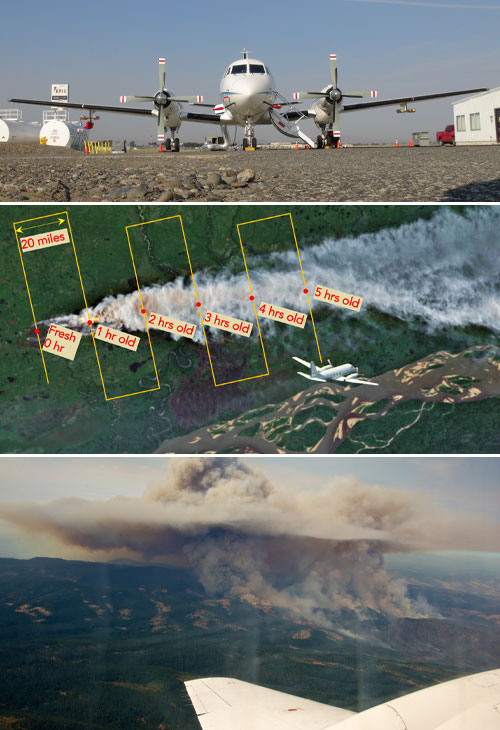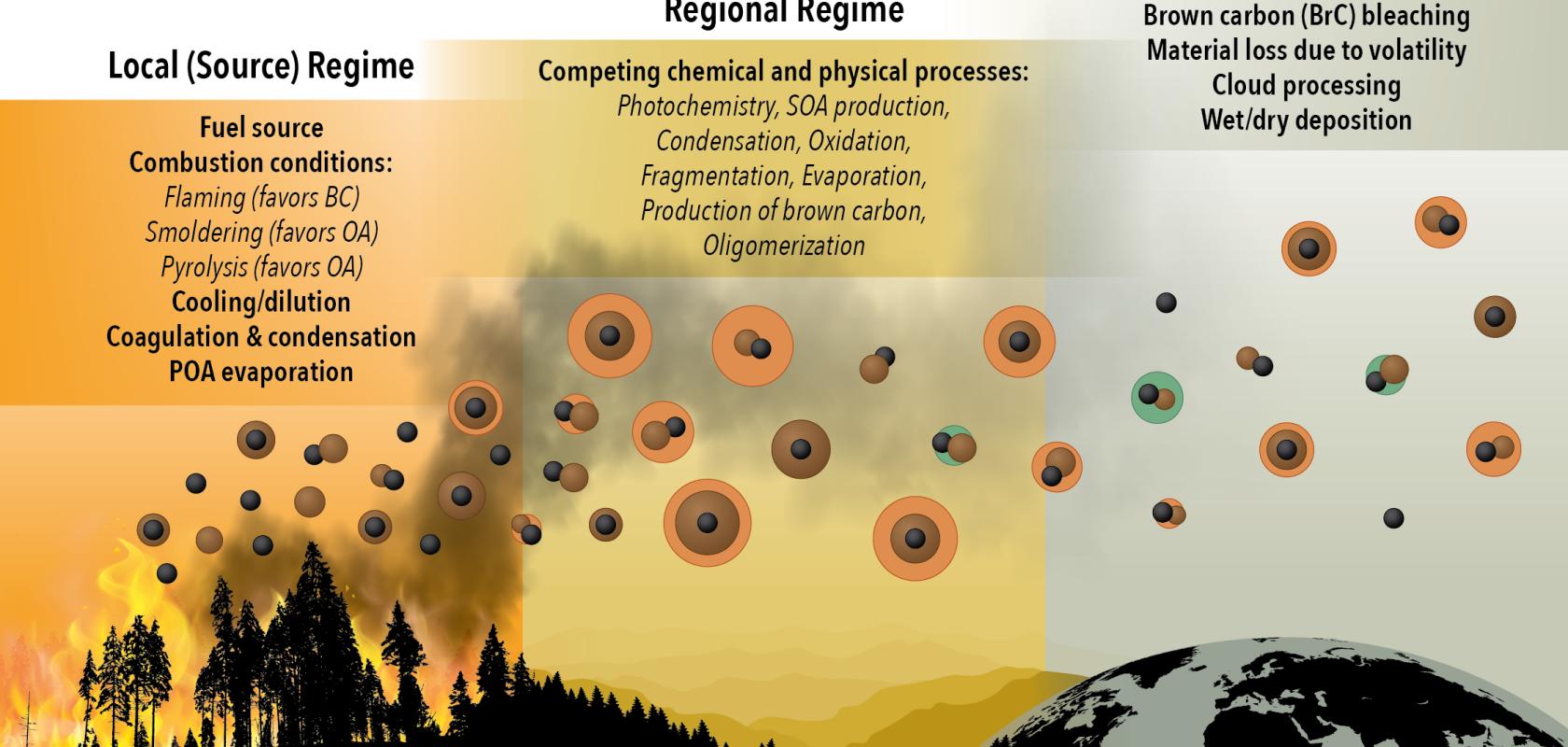Wildfire plumes are affecting the Earth’s climate more than previously suggested, scientists have discovered, using optical instruments to analyse soot particles in the atmosphere.
A team at the US Department of Energy’s Brookhaven National Laboratory says global climate models aren’t getting the full picture of how wildfires impact climate. These models base estimates on the optical properties of soot particles sampled in the immediate vicinity of a fire and fail to account for changes in soot particles over time. Those changes, the scientists say, can dramatically influence how much sunlight the particles scatter or absorb, how they interact with water, and how likely they are to form clouds – all of which are important to how they ultimately affect the Earth’s climate.
To measure how soot particles evolve, the scientists flew more than 60 research flights through wildfire plumes, at increasing distances from fires. By criss-crossing each plume repeatedly, they picked up young particles relatively close to fires, as well as particles that had evolved for hours. Other flights sampled plumes far from their sources, with ages estimated to be over 10 days.
A single particle soot photometer (SP2) mounted on the plane sent a stream of particles one-by-one through a laser beam and picked up flashes of light when the particles vapourised.
Within the first hour of forming, a black carbon particle accumulates a coating of organic material from volatile organic compounds that were vapourised from burning vegetation, which then encapsulates the black carbon ‘cores’.

The DOE aircraft used for some of the sampling flights, a flight path schematic, and a view from the plane's window (CREDIT: U.S. Department of Energy Atmospheric Radiation Measurement (ARM) user facility, others courtesy of Art Sedlacek).)
If a particle does not contain black carbon, it only scatters light from the laser, and the amount of light scattered can be used to determine the size of the particle. Particles that contain black carbon scatter some light, but they also absorb light. In doing so, they rapidly heat up, triggering a series of events that occur over just a few millionths of a second.
First, the coatings evaporate, making the particles smaller, resulting in less scattered light. Next, with their coatings gone and unable to dissipate heat, the black carbon particles heat up to nearly 4,000°C, in which they evaporate and emit a flash of light. The amount of light picked up by the SP2 is directly related to how much black carbon was in the particle. Subtracting that amount from the particle size determined by the initial laser scattering gives the scientists the thickness of the coating.
This data, about both the black carbon particles in the plume and the other particles, can then be used to calculate how the plume as a whole interacts with sunlight and affects climate. And by making measurements of plumes at various ages, scientists can obtain a better understanding of how these interactions change over the lifetimes of the plumes.
Most climate models assume that all soot particles look like these uniformly coated black carbon cores. But the new data show that the thickness of the coating material remains relatively constant for only one to two days before it starts thinning slowly. By day 10 of the particle’s lifecycle, only about 30% of it remains.
“This slow loss of coating material is not captured in today’s climate models,” said Brookhaven atmospheric scientist Arthur Sedlacek.
These changes impact the particles’ optical properties. For example, as the thickness of a coating on a black carbon particle decreases, the amount of light scattered by the particle decreases more rapidly than the amount of light absorbed. Since light scattering by particles generally has a net cooling effect on Earth’s climate and light absorption has a net warming effect, this change in the balance alters the effect of these particles on climate.
In addition, for plumes at low elevations where clouds form, particles that have a thicker coating more readily form cloud drops. That means these particles can be removed from the plume and fall out of the atmosphere if the cloud drop becomes a raindrop. The black carbon particles remaining in the plume are therefore the ones with thinner coatings.
"Thinner coatings make these remaining plume particles relatively more light-absorbing… more absorption may trap more heat and warm Earth's climate,” said Ernie Lewis, a co-author of the study published in Environmental Science & Technology in October 2022.




